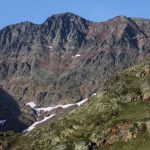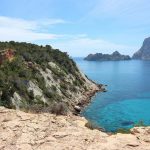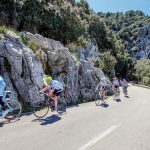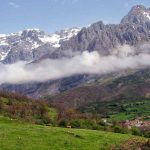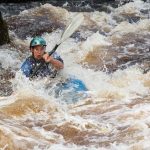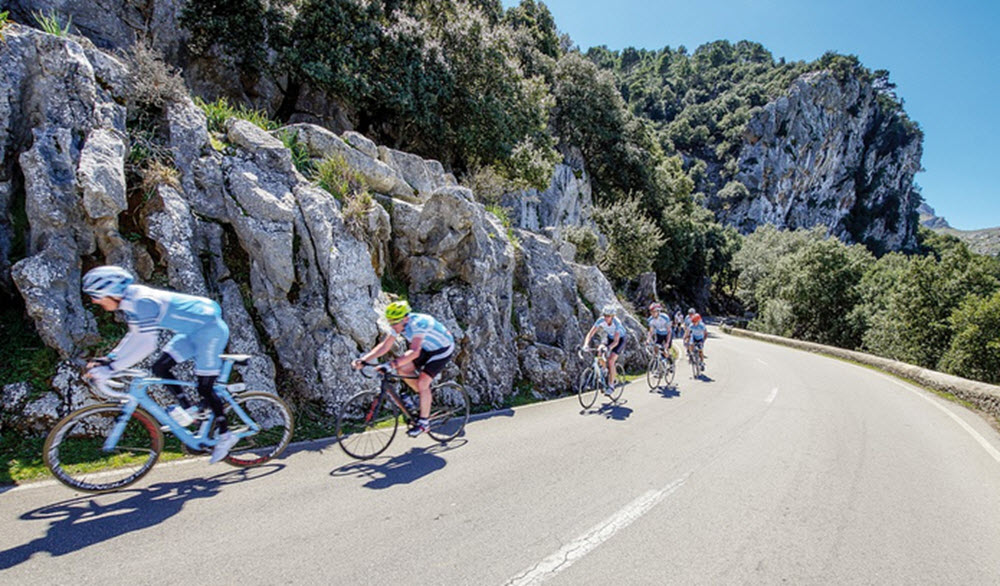Cycling in Northern Spain
Spain. We’re all familiar with the stereotypes. In most people’s minds it probably conjures up images of hot sunny weather, overpopulated beaches, high-rise hotels and of course the usual pot-pourri of bullfights, sangria and flamenco. Tourist resorts of course do their best to live up to the expected image as a visit to any of the myriad souvenir shops which line the Spanish costas will prove.
As a child, I myself had been exposed to this rather incomplete vision of Spanish life and customs as my family formed part of what must have been the first wave of package travel tourists in search of sun, sea and sand. We certainly enjoyed it and it was a real eye-opener after growing up in the less benevolent climes of Lancashire and enjoying the occasional vision of the sea in the distance from Southport or Blackpool. Family holidays were spent on the north coast of a Mallorca where tourism was still in its infancy.
After a few years, we decided to do something different and ended up taking a caravan to another completely different area in Spain – the northern coast. We disembarked in Bilbao and the next two weeks were spent exploring the provinces washed by the tides of the Bay of Biscay and the Cantabrian Sea. The northern Spanish coast consists of four main geographical areas; the Basque Country begins where the Pyrenees begin, on the border between France and Spain; west of here we enter Cantabria which in turn gives way to Asturias. Finally we reach Galicia in the north-western corner of Spain, just above Portugal. All have very different identities and customs, and even languages such as those spoken in Galicia and the Basque Country.
The first impression the north makes on the visitor is the extraordinarily verdant landscape. Indeed, Spaniards themselves are often surprised by it, as Spain is a largely arid country. There is also a refreshing lack of the mass tourism, which characterises the Mediterranean coast, often completely ruined by overdevelopment. In the north, the green meadows often run down to the magnificent beaches.
Another lasting impression is that made by the unbelievably wild scenery. The green pastureland along the coast quickly gives way to spectacular mountain scenery which reaches its high point in the Picos de Europa. As a child I remember taking the road which runs from Ribadasella into the Picos, round to Potes and then back down to the coast. The highest mountains I had seen up to that point had been those of Scotland, which were of course dwarfed by these towering limestone pinnacles. These mountains were also home to one of Europe’s few remaining populations of brown bear which still survives in a just about stable fashion between Cantabria and Asturias. Wolves also share these mountains along with several birds of prey, eagles and vultures. Indeed, birds of prey can be constantly seen perched on telegraph poles and wires along the wayside.
So what makes this such a good area for cycling?
Well, one of the reasons is the complete lack of commercial development. It gets away from the traditional Spanish stereotypes. Most of the tourists who spend time here are Spaniards themselves and fish and chips or German sausages are just nowhere to be seen. Food is authentic Spanish fare and ranges from rich bean stews to fine fish and seafood, with the excuse that you can cycle it off the next day.
You will probably have to get to grips with at least a few Spanish words to make yourself understood as not everyone speaks English. But then again, that’s what traveling is all about.
Another reason is the fantastic scenery to be found here. This ranges from the softly undulating landscape along the coasts to the jagged peaks of the Picos. There is a tremendous variety of scenery to be found even in a day’s ride – beautiful beaches, dramatic cliffs, river estuaries which are home to many different bird species, enchanting fishing villages and inland mountain villages, untouched by time, and all with the backdrop of the hills and mountains. I should make it clear at this point that this is not Holland, and I am not referring to the absence of tulips. The landscape near the coast is easy cycling but is definitely up and down. Further into the mountains, routes need to be chosen with care if you are not the sort of person who enjoys climbing long mountain passes.
The weather is also a good reason for choosing to cycle in the north. Spain in general is a hot and arid country. The first time I did some serious cycling in Spain, we had sailed to the port of Santander. After spending a couple of nights in the delightful medieval village of Santillana del Mar, we decided to cycle into the mountains and head down towards Barcelona from where we planned to take a ferry to Mallorca. Once over the mountains, we began to suffer from an oppressive heat and bright sunshine. By the time we got to Pamplona I think we had stopped at virtually every tap on route to quench our thirst. The prospect of cycling across Spain in this sort of heat became less and less appealing and in the end was replaced by a cross Pyrenees jaunt to nearby France where the weather was more to our liking. The point is that while the rest of Spain is baking in the summer sun, the northern coast enjoys a much milder climate. However, it does rain occasionally so you may need to pack the waterproofs just in case.
A route in the Cantabrian Mountains
The following route takes place high in the Cantabrian Mountains. This is an area not often visited by tourists, as most people tend to head for the more dramatic Picos de Europa. This area is called Campoó and its main claim to fame is as the source of the longest river in Spain, the River Ebro. The river bubbles up from the ground in the village of Fontibre and begins its journey towards the Mediterranean. The source itself is worth a visit. It is surrounded by a pleasant park and watched over by a stone Virgin.
Further up the valley, we reach the ski resort of Alto Campoó. The highest peak here is called Tres Mares (Three Seas). The name is due to the fact that if a drop of water fell on the peak, part would drain down to the Cantabrian Sea and the Bay of Biscay, another would drain westwards towards the Atlantic, and the last would of course be absorbed by the Ebro on its journey to the Mediterranean.
Scenery in this area is wild and often reminiscent of the Scottish mountains. It is relatively sparsely populated, the capital being Reinosa, an old market town and now an important industrial centre. The low population means of course that there is little motor traffic, making it an ideal place for cycle trips. An excellent cycle path has been built on the road from Reinosa to Alto Campoó.
Another main attraction, to the east of Reinosa, is the impressive Ebro Reservoir. This immense body of water is an important nature reserve, famous above all for its birdlife. There are also submerged villages and the nearby Roman remains of Julióbriga.
This is a fine area to escape from crowds and to do some exploring of unknown Spain, well off the beaten track

